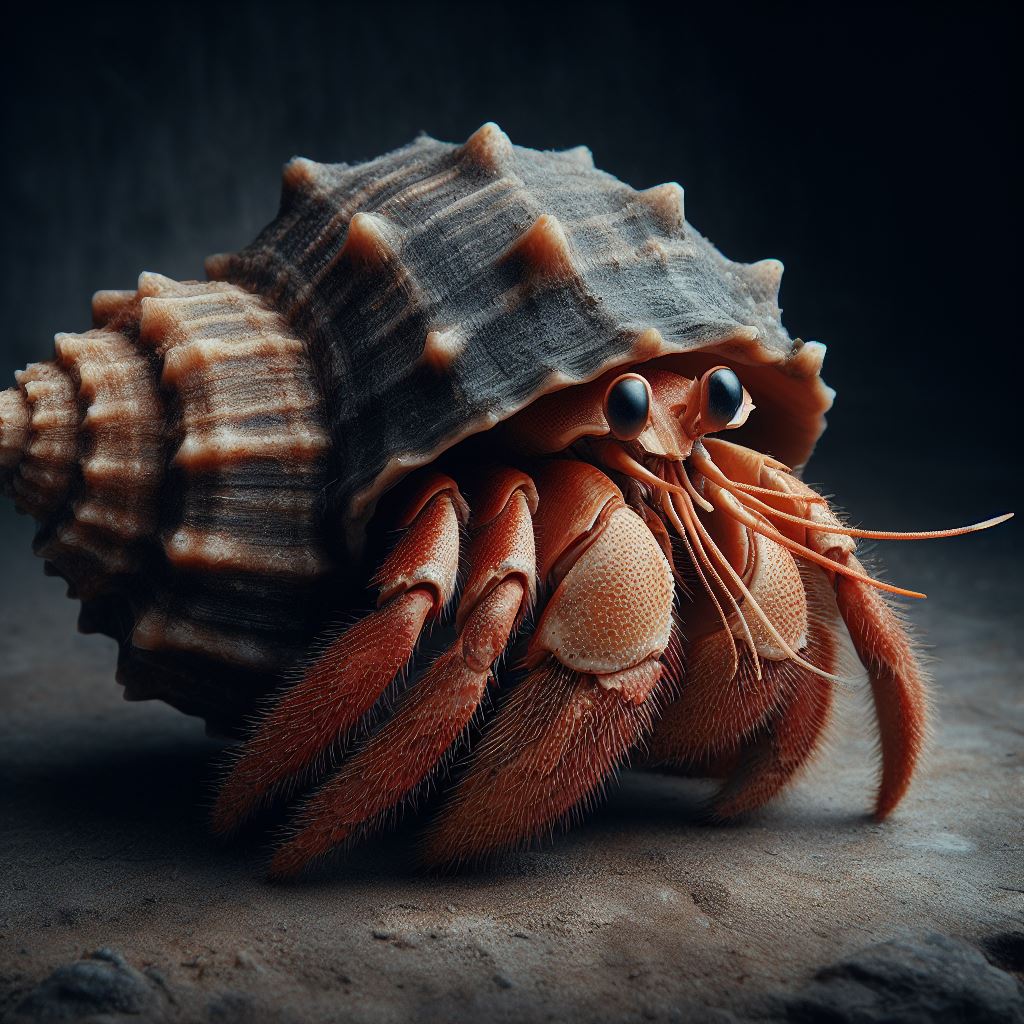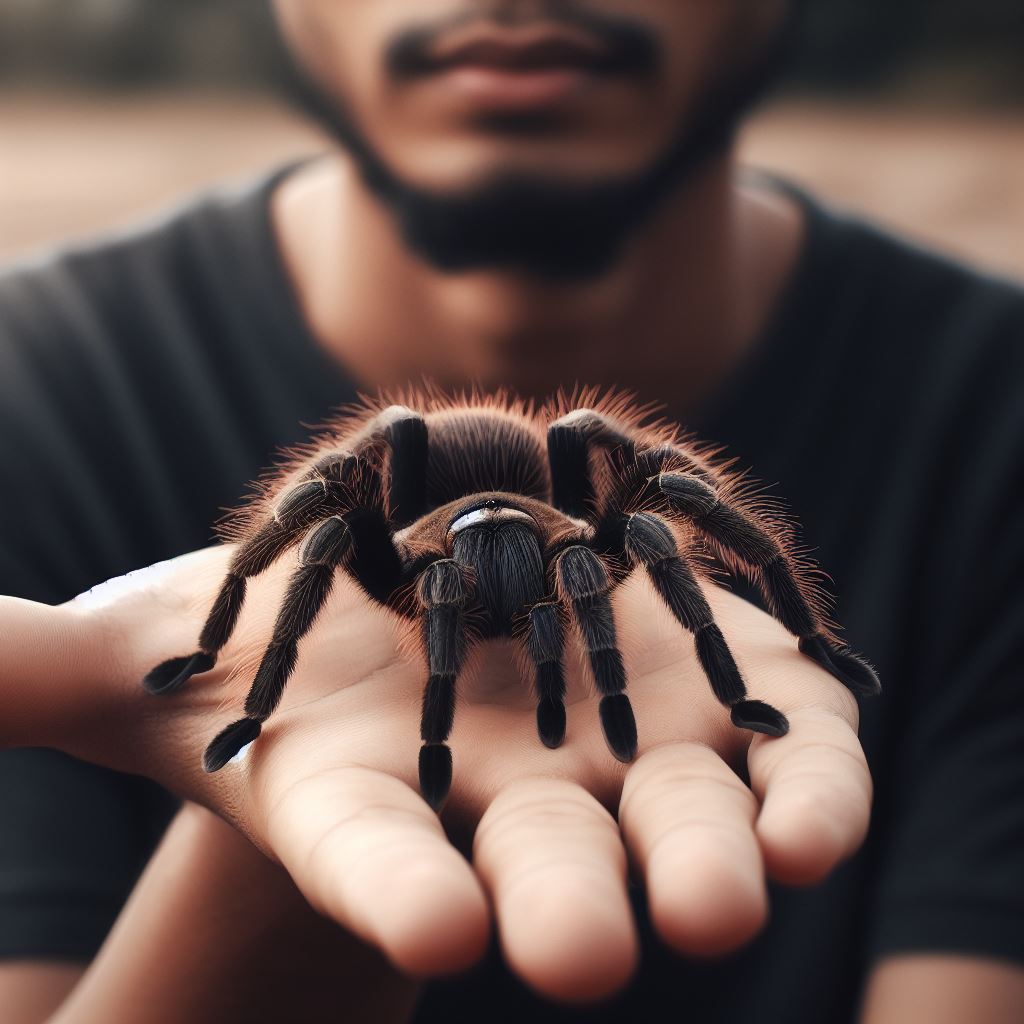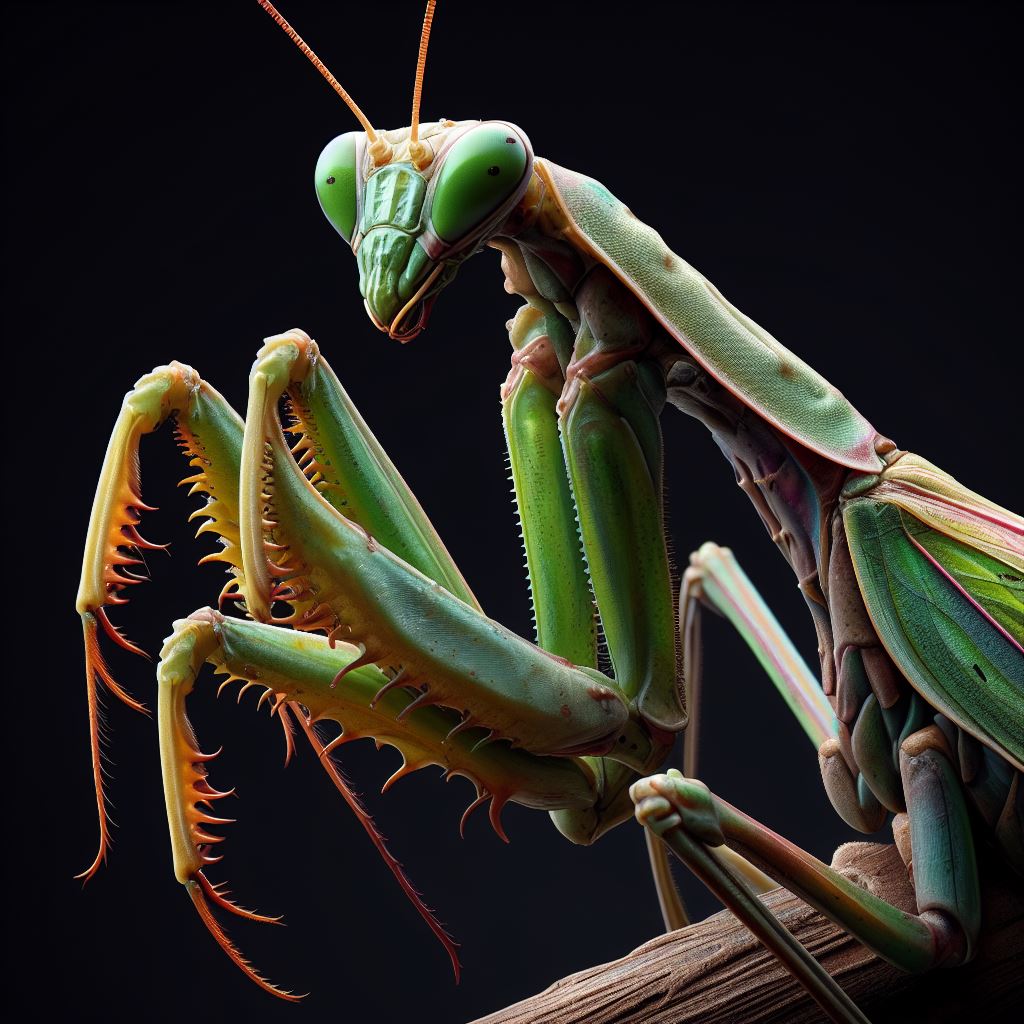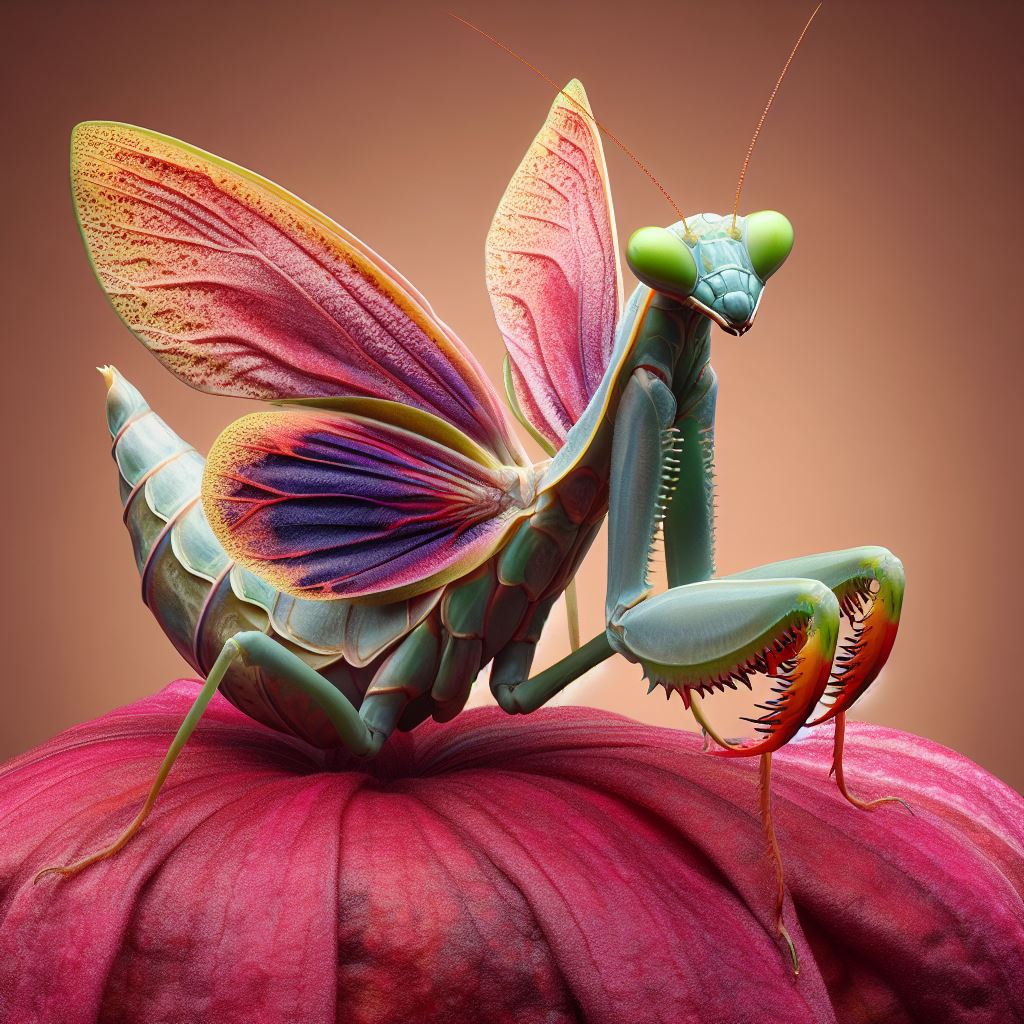In the hidden realms of coastal seascapes, where the waves meet the shore and the secrets of the ocean whisper in the wind, resides a creature of extraordinary charm and mystery: the hermit crab. This profile is an expedition into the captivating world of these tiny, enigmatic crustaceans, unraveling the intricacies of their lives and shedding light on the responsibilities of hermit crab enthusiasts.
II. Species Name: Hermit Crabs
Taxonomy and Classification
Hermit crabs, scientifically classified under the infraorder Anomura, are a diverse group of decapod crustaceans. Belonging to the superfamily Paguroidea, they exhibit remarkable adaptations, making them distinct within the crustacean lineage.
Physical Characteristics
Exoskeleton and Shell Adaptations: One of the most intriguing aspects of hermit crabs is their use of empty seashells as portable shelters. Their soft, curved abdomens fit snugly into these shells, providing them with protection against predators and desiccation. This unique adaptation defines their identity, showcasing their resourcefulness in the face of the ever-changing oceanic landscape.
Limb Structure and Functionality: Hermit crabs boast an array of appendages, each serving a specialized purpose. Their claws, or chelipeds, vary in size and shape, enabling them to grasp onto objects with remarkable dexterity. These limbs, coupled with their agile walking legs, facilitate their exploration of the seafloor and the intricate dance of shell selection.
III. Description of Hermit Crabs
Size and Color Variations
Hermit crabs exhibit a spectrum of sizes, ranging from minuscule species measuring a few millimeters to larger varieties spanning several inches. Their coloration, a blend of muted tones and occasional vibrant hues, aids in their camouflage among the diverse habitats they inhabit.
Unique Features
Hermit Crabs and Shells: A Symbiotic Relationship: The symbiotic bond between hermit crabs and their chosen shells is more than mere protection; it defines their identity. As hermit crabs grow, they outgrow their shells, necessitating a periodic change—a process often signaled by restlessness and repeated attempts to find a suitable replacement. This ritual of finding the perfect fit embodies their survival strategy and resourcefulness.
Eyes and Antennae: Tools of Perception: The world of hermit crabs is experienced through multifaceted eyes that provide a panoramic view of their surroundings. Paired with sensitive antennae, these organs detect chemical cues, vibrations, and even subtle changes in light. This acute sensory perception guides them in foraging, mate selection, and interaction with their fellow crabs.
IV. Habitat of Hermit Crabs
Native Geographical Locations
Hermit crabs adorn the shores of oceans across the globe, inhabiting tropical and temperate regions. From the pristine beaches of the Caribbean to the rocky alcoves of the Pacific, their presence enriches diverse ecosystems.
Coastal Environments: The Preferred Home
Sandy Shores and Rocky Crevices: The sandy shores provide ample opportunities for hermits to burrow and seek refuge. In the embrace of rocky crevices, they find shelter, their chelipeds adeptly gripping onto the textured surfaces, securing them against the ebb and flow of tides.
Tidal Pools and Brackish Water Habitats: Tidal pools, with their ever-changing salinity, are not deterrents but havens for certain hermit crab species. Adapted to fluctuations, they navigate the complexities of brackish waters, harmoniously coexisting with a myriad of marine life.
V. Diet of Hermit Crabs
Omnivorous Nature: Exploring Food Choices
Hermit crabs are opportunistic omnivores, displaying a versatile palate. They scavenge the ocean floor for decaying plant and animal matter, relishing the richness of carrion. Algae, plankton, and detritus—all find a place in their culinary repertoire.
Scavenging Behavior and Adaptations
Feeding Patterns in the Wild: Hermit crabs, with their scavenging nature, play a crucial role in the ecosystem by recycling organic matter. Their scavenging behavior not only sustains them but also contributes to the balance of coastal environments.
Nutritional Needs in Captivity: In captivity, replicating their natural diet is paramount. Commercial hermit crab food, supplemented with fresh fruits, vegetables, and calcium-rich sources, ensures their nutritional requirements are met. Careful attention to their diet fosters their vitality and overall well-being.
VI. Feeding Habits of Hermit Crabs
Frequency of Feeding
Hermit crabs, with their constant activity, require regular feeding. Providing them with food every day mimics their natural foraging behavior, sustaining their energy levels and promoting healthy growth.
The Art of Foraging: Hunting Strategies
Role of Antennae in Sensing Food: Hermit crabs employ their delicate antennae to sense and locate food. These appendages, finely tuned to detect scents and vibrations, guide them toward potential meals. The elegant dance of their antennae is a testament to their sophisticated sensory world.
Cooperative Feeding: Social Aspects: In certain species, hermit crabs exhibit social feeding behaviors. They gather around food sources, engaging in communal feasting. This communal approach not only strengthens their social bonds but also showcases their adaptability and cooperation in the quest for sustenance.
VII. Care Tips for Hermit Crab Owners
Suitable Housing Requirements
The foundation of hermits care lies in creating a habitat that mirrors their natural environment. Enclosures, designed as aquariums or terrariums, should accommodate their burrowing instincts and provide ample space for exploration.
Enclosure Types: Aquariums and Terrariums
Substrate and Natural Environment Replication The substrate, a blend of sand and coconut fiber, should offer a comfortable burrowing medium. Adding seashells, rocks, and pieces of driftwood replicates the coastal landscape, providing them with hiding spots and climbing opportunities.
Temperature and Humidity Control
Importance of Heat Lamps and Heat Pads: Maintaining the right temperature is vital. Heat lamps and heat pads create warmth, essential for their metabolic processes and overall well-being. Regulating the temperature ensures they remain active and healthy.
Maintaining Optimal Humidity Levels Hermit crabs require a humid environment to support their gill-like structures, which enable them to breathe. Humidity levels are crucial; misting systems and humidifiers help maintain the necessary moisture, preventing desiccation and ensuring their survival.
Social Needs and Behavior
The Hermit Crab Social Structure Hermit crabs are social beings, often found in groups called ‘crabbiness.’ Their interactions, including shell swapping and antennae probing, are essential components of their social structure, providing them with a sense of community.
Shell Swapping: Communication and Hierarchy Shell swapping is more than a utilitarian act; it communicates vital information. Through this exchange, hermit crabs establish hierarchies within their groups. The choice of a new shell signifies growth, heralding a change in status and influence.
Exercise and Mental Stimulation
Providing Climbing Opportunities Hermit crabs are natural climbers, and providing them with climbing opportunities enhances their physical and mental well-being. Decorative elements, such as tree branches and mesh nets, offer them avenues for exploration and exercise.
Importance of Social Interactions: Social interactions are fundamental to their happiness. Interacting with fellow hermit crabs relieves stress, fosters companionship, and enriches their lives. Engaging with their environment and companions promotes mental stimulation, ensuring their cognitive health.
VIII. Grooming Routines and Molting Process
Molting Cycles: A Crucial Life Stage
Molting is a pivotal phase in the life of hermit crabs. During this process, they shed their exoskeletons, allowing for growth and regeneration. Molting cycles are indicators of their health and well-being.
Molting Signs and Precautions
Providing Privacy and Seclusion: Hermit crabs require privacy during molting. Providing secluded areas within the enclosure, where they can retreat and molt in peace, ensures their safety. Interrupting this process can lead to stress and potential health issues.
Removing Old Exoskeleton: When and How: After molting, hermit crabs are vulnerable until their exoskeletons harden. Removing the old exoskeleton once they have fully molted prevents cannibalism and ensures the molter’s safety. This delicate process demands precision and care.
IX. Medical Care and Common Health Issues
Signs of Illness: Observational Cues
Observational cues, such as changes in behavior, appetite, or appearance, indicate potential health issues. Vigilant observation allows owners to detect early signs of illness, enabling timely intervention.
Handling Stress and Behavioral Changes
Recognizing Stress-Induced Behavior: Stress-induced behavior, including aggression or excessive hiding, reflects their emotional state. Identifying these signs helps address the root cause, whether it’s environmental stressors or social dynamics within the group.
Minimizing Stress during Handling: Minimizing stress during handling is paramount. Gentle handling techniques and creating a calm environment reduce anxiety, ensuring the hermit crab feels secure and unthreatened during interactions.
Importance of Regular Check-ups: Regular veterinary check-ups are essential for their overall health. A specialized hermit crab veterinarian comprehensively examines them, offering insights into their well-being and addressing any health concerns promptly.
Choosing a Hermit Crab Veterinarian
Selecting a knowledgeable and experienced hermit crab veterinarian is crucial. Their understanding of hermit crab physiology and behavior ensures accurate diagnoses and effective treatment plans, fostering the best possible care.
Preventative Measures and Health Assessments
Preventative measures, such as providing a balanced diet and maintaining a clean enclosure, are foundational. Health assessments, including shell examinations and weight monitoring, allow owners to track their hermit crab’s well-being proactively.
Necessary Equipment and Supplies
Shell Options: A Home for Every Crab
A diverse selection of seashells is essential. Hermit crabs, with their penchant for exploration, appreciate variety. Properly sized and textured shells are crucial, ensuring they can change homes as they grow.
Heating and Lighting Essentials
UVB Lighting and its Importance: Heating elements and UVB lighting are vital components of their enclosure. UVB lighting aids in synthesizing Vitamin D, crucial for their calcium metabolism and overall health. Creating a diurnal cycle regulates their biological rhythms.
Creating a Diurnal Cycle: A diurnal cycle, replicating natural day and night patterns, is instrumental. Consistent light and dark periods mimic their natural habitat, regulating their activity levels and promoting natural behaviors.
Humidity Control Tools and Techniques
Humidifiers and Misting Systems: Maintaining optimal humidity is achieved through humidifiers and misting systems. These tools ensure the enclosure’s humidity levels remain within the required range, supporting their respiratory functions and gill health.
Substrate Moisture Maintenance: The substrate’s moisture content is pivotal. Regular misting and substrate monitoring prevent it from drying out, creating an environment where hermit crabs can burrow comfortably and maintain their hydration levels.
Food Choices and Nutrition
Commercial Diets vs. Natural Foods: Balancing commercial diets with natural foods enriches their nutritional intake. While commercial diets offer convenience, supplementing them with fresh fruits, vegetables, and protein sources ensures a well-rounded, varied diet.
Calcium Supplements and Shell Health: Calcium supplements play a crucial role in maintaining shell health. Hermit crabs utilize calcium for their exoskeletons and shell strength. Providing calcium-rich sources, such as cuttlebone or crushed oyster shells, supports their growth and vitality.
Social Aspects of Hermit Crab-Keeping
Hermit Crab Communities: Online Forums and Communities
The digital realm hosts vibrant hermit crab communities. Online forums and social media groups serve as platforms for enthusiasts to share knowledge, exchange experiences, and seek advice, fostering a sense of camaraderie.
Sharing Knowledge and Experiences
Breeding Success Stories and Challenges: Breeding hermit crabs is a challenging endeavor. Enthusiasts share their success stories and challenges, contributing to the collective knowledge base. These shared experiences empower others, offering valuable insights into the intricacies of hermit crab reproduction.
Behavior Observations and Insights: Observing hermit crab behavior provides profound insights into their social dynamics and individual personalities. Enthusiasts meticulously document behaviors, shedding light on their complex interactions and enriching our understanding of their fascinating lives.
Hermit Crab Conservation Initiatives
Preserving Natural Habitats: Preserving the natural habitats of hermit crabs is paramount. Conservation initiatives focus on protecting coastal ecosystems, ensuring the delicate balance of these environments and securing the future of hermit crab populations.
Education and Awareness Campaigns: Education and awareness campaigns play a pivotal role. By imparting knowledge about hermit crabs’ ecological significance and their captivating behaviors, these campaigns inspire a sense of responsibility, encouraging the preservation of their natural habitats.
Common Misconceptions about Hermit Crabs
Clarifying Misguided Beliefs
Misconceptions abound, often leading to uninformed decisions. Clarifying these beliefs dispels myths and fosters a deeper understanding of hermit crabs’ needs and behaviors.
Small Shells; A Common Misconception: The belief that hermit crabs can adjust to indefinitely small shells is a fallacy. Proper-sized shells are vital for their well-being, enabling them to change homes as they grow, preventing shell-bound issues.
Myth of Endless Shell Upgrades: While hermit crabs change shells, it is not an endless pursuit. They carefully choose shells that match their size and needs, displaying a discerning selection process rooted in survival instincts.
Debunking Hermit Crab Myths
Land Hermit Crabs and Water: Dispelling the Myth The misconception that hermit crabs can survive solely on land is dispelled. While they breathe air, they require access to both land and water, ensuring they can maintain their gills’ moisture and overall hydration.
Hermit Crab Longevity: Separating Fact from Fiction Hermit crabs have a finite lifespan, and claims of extreme longevity are scrutinized. Understanding their natural lifespan allows owners to appreciate the precious moments shared with these remarkable creatures.
Hermit Crabs in Culture and History
Symbolism and Cultural Significance
In indigenous cultures, hermit crabs symbolize diverse concepts such as protection, adaptability, and regeneration. Their symbolic representations in art and literature echo the intricate relationship between humans and nature.
Hermit Crabs in Indigenous Cultures: Indigenous cultures, rich in symbolism, regard hermit crabs with reverence. They embody adaptability and protection, qualities revered by these cultures. Through rituals and stories, hermit crabs are woven into the cultural tapestry, their significance echoing through generations.
Symbolic Representations in Art and Literature: Artistic expressions capture the essence of hermit crabs’ symbiotic existence. In literature, they symbolize resilience, depicting life’s cyclical nature. Artists draw inspiration from their shell-bound existence, creating mesmerizing representations that transcend their physicality.
Historical References and Influences
Hermit Crabs in Maritime Folklore: Maritime folklore is replete with tales of hermit crabs. Sailors, enchanted by their coastal companions, wove stories of transformation and adaptability. These narratives, steeped in the mystique of the sea, immortalize hermit crabs in maritime lore.
Contributions to Scientific Understanding: crabs, beyond their cultural significance, are vital subjects in scientific research. Their behaviors, from shell selection to social interactions, provide valuable insights into animal behavior and adaptation. Scientists study these fascinating creatures, unraveling the intricacies of their existence.
Famous Hermit Crab Species
Notable Hermit Crab Varieties
Hermit crabs exhibit remarkable diversity, each species possessing unique traits. Varieties such as the Purple Pinchers and Ecuadorian Hermit Crabs captivate enthusiasts with their distinct characteristics and behaviors.
Purple Pinchers and Ecuadorian Hermit Crabs: Purple Pinchers, known for their vibrant coloration, and Ecuadorian Hermit Crabs, with their intricate patterns, are among the most admired species. Their unique features and behaviors make them sought-after pets, drawing enthusiasts into the captivating world of hermit crab keeping.
Caribbean Land Hermit Crabs: Caribbean Land Hermits, inhabitants of tropical paradises, are cherished for their charming personalities. Their playful antics and colorful appearances endear them to hermit crab enthusiasts, fostering a dedicated following.
Unique Behavioral Traits of Famous Species
Shell Preference and Adaptations: Each hermit crab species exhibits specific shell preferences, showcasing their adaptability to diverse environments. Understanding these preferences aids enthusiasts in providing suitable options, ensuring their hermit crabs feel secure and content.
Feeding Behaviors in Different Species: Feeding behaviors vary among species, reflecting their ecological niches. Studying these behaviors not only enriches our understanding but also guides crab owners in offering nutritionally balanced diets tailored to their species’ natural inclinations.
Fun Facts about Hermit Crabs
Intriguing Behavioral Quirks
Hermit crabs are replete with intriguing quirks. Their communication, achieved through pheromones and subtle gestures, forms a complex language. These behaviors, whether shell swapping or communal feeding, illuminate the depths of their social interactions.
Hermit Crab Communication: The Pheromone Language Hermits communicate through pheromones, chemical signals that convey information about their readiness to mate, territorial boundaries, and even stress levels. This nuanced communication forms the basis of their social structure, enriching their interactions.
Unique Shell Decorating Patterns: These wanderers, in their quest for individuality, exhibit distinct shell decorating patterns. From arranging shells in intricate formations to adorning them with anemones and sponges, each crab showcases a unique artistic flair, emphasizing their creative instincts.
Hermit Crabs in Popular Culture
Hermit Crabs in Cartoons and Animated Films: Hermits have found their way into popular culture, making appearances in cartoons and animated films. Their endearing qualities and shell-swapping antics captivate audiences, transforming them into beloved characters on screen.
Hermit Crabs as Characters in Literature: In literature, hermits symbolize metaphysical concepts, embodying themes of transformation and renewal. Their nomadic existence resonates with human experiences, inspiring profound reflections on life’s ever-changing nature.
Unique Hermit Crab Discoveries: Scientific discoveries continually unveil the secrets of these lovely crabs. New species, each with its peculiarities, expand our knowledge of these captivating creatures. Researchers, enthralled by their mysteries, venture into unexplored realms, unraveling the intricacies of hermit crab biology.
Conclusion
In the intricate tapestry of nature, hermit crabs stand as remarkable threads, weaving tales of adaptation, resilience, and symbiosis. This exploration into their world has illuminated the depths of their existence, revealing not just the complexities of their biology but also the profound lessons they offer to humanity.
Responsible Ownership and Ethical Hermit Crab Care The journey of crab ownership is one of responsibility and ethical stewardship. As custodians of these tiny wonders, it is our duty to provide them with environments that mirror their natural habitats, ensuring their physical and emotional well-being.
Celebrating the Enigmatic World of Crabs In celebrating the enigmatic world of hermit crabs, we acknowledge the interconnectedness of all life forms. Their existence, intertwined with the coastal ecosystems they inhabit, reminds us of the delicate balance that sustains our planet. Through our understanding and appreciation, we contribute to the preservation of their habitats and the perpetuation of their enchanting legacy.




